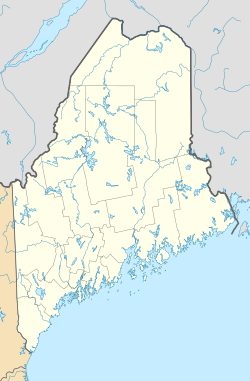Mortland Family Farm facts for kids
Quick facts for kids |
|
|
Mortland Family Farm
|
|
| Nearest city | Searsport, Maine |
|---|---|
| Area | 16.3 acres (6.6 ha) |
| Built | 1834 |
| Architectural style | Greek Revival |
| NRHP reference No. | 91001510 |
| Added to NRHP | October 24, 1991 |
The Mortland Family Farm is a very old farm located on Mortland Road in Searsport, Maine. It started way back in 1834 and was changed and made bigger until about 1950. This farm is a great example of a "New England connected farmstead." This special type of farm, where buildings are linked together, is now quite rare in Maine. The farm, which is about 16.3 acres (6.6 ha) today, was added to the National Register of Historic Places in 1991 because of its important history.
Contents
Exploring the Mortland Family Farm
The Mortland Family Farm is found in the countryside of Searsport, Maine. It sits on the east side of Mortland Road. When you visit, you can still see many of the original parts of the farm.
What You Can See Today
The main house was built in 1834. It is a stone house built in the Greek Revival style. This style was popular a long time ago. There are also two barns from the 1800s. These buildings are connected by wooden sections called "ells." This is what makes it a "connected farmstead."
A more modern dairy shed was added around 1950. It is attached to one of the barns. The farm also has a spot where an old cellar used to be. People believe this was where the very first house on the property stood. You can also see two open fields that were once used for farming. There is even a small apple orchard left from the past.
A Look Back at the Farm's History
The Mortland Family Farm was first settled in the 1820s. An immigrant from Ireland named Samuel Mortland and his family started living there. At first, they lived in a simple log cabin.
Building the Farmhouse
In 1834, Samuel Mortland built the stone house that you can still see today. The Mortland family owned this farm for a very long time. Five different generations of the family lived and worked here. They finally sold the farm in 1985.
How the Farm Grew
The farm was much bigger in the 1850s. It had over 68 acres (28 ha) of land. The main house was made larger in the 1860s. The barns were built later, in the 1890s. One of these barns was even made using parts from an older barn nearby. In the 1900s, the farm mostly focused on raising dairy cows for milk.



